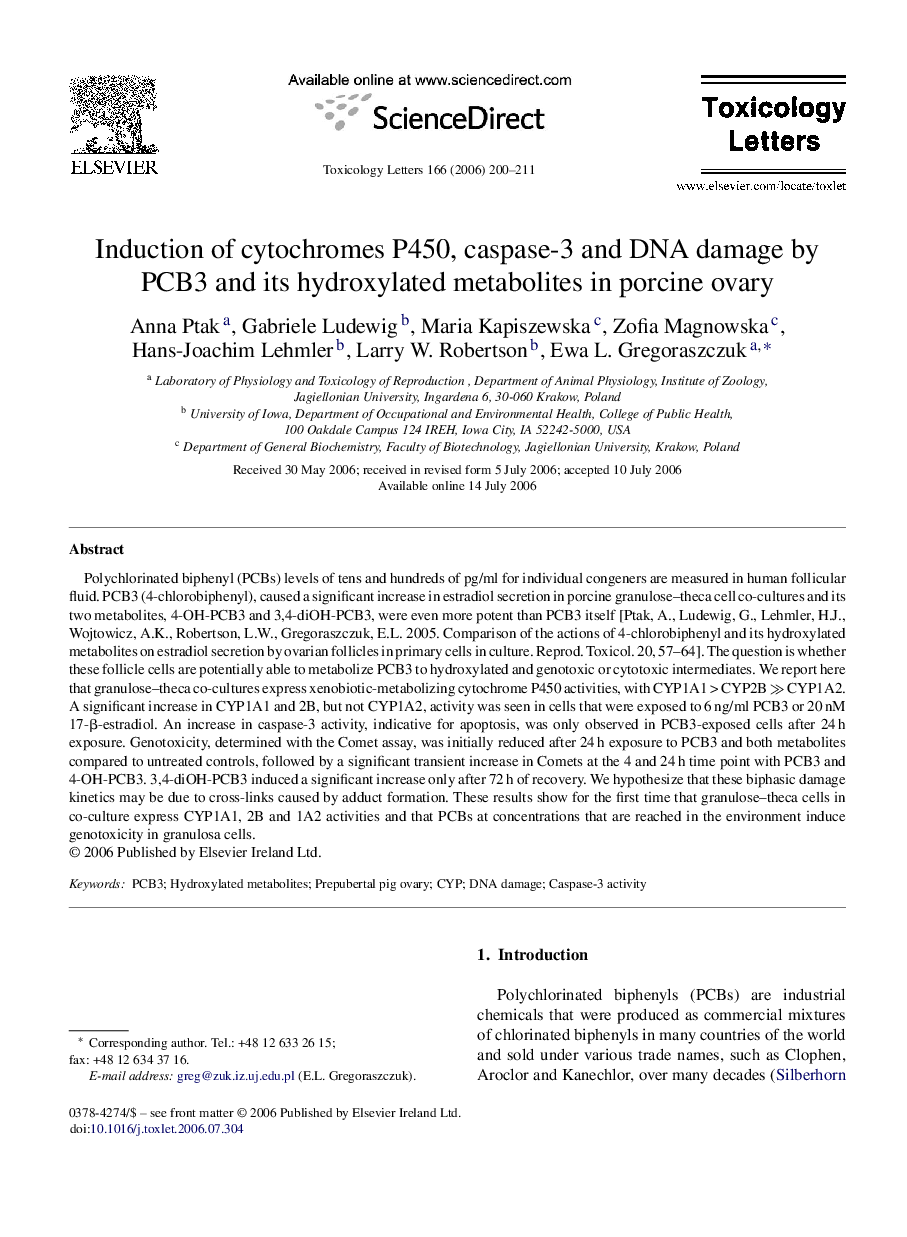| کد مقاله | کد نشریه | سال انتشار | مقاله انگلیسی | نسخه تمام متن |
|---|---|---|---|---|
| 2602313 | 1133393 | 2006 | 12 صفحه PDF | دانلود رایگان |

Polychlorinated biphenyl (PCBs) levels of tens and hundreds of pg/ml for individual congeners are measured in human follicular fluid. PCB3 (4-chlorobiphenyl), caused a significant increase in estradiol secretion in porcine granulose–theca cell co-cultures and its two metabolites, 4-OH-PCB3 and 3,4-diOH-PCB3, were even more potent than PCB3 itself [Ptak, A., Ludewig, G., Lehmler, H.J., Wojtowicz, A.K., Robertson, L.W., Gregoraszczuk, E.L. 2005. Comparison of the actions of 4-chlorobiphenyl and its hydroxylated metabolites on estradiol secretion by ovarian follicles in primary cells in culture. Reprod. Toxicol. 20, 57–64]. The question is whether these follicle cells are potentially able to metabolize PCB3 to hydroxylated and genotoxic or cytotoxic intermediates. We report here that granulose–theca co-cultures express xenobiotic-metabolizing cytochrome P450 activities, with CYP1A1 > CYP2B ≫ CYP1A2. A significant increase in CYP1A1 and 2B, but not CYP1A2, activity was seen in cells that were exposed to 6 ng/ml PCB3 or 20 nM 17-β-estradiol. An increase in caspase-3 activity, indicative for apoptosis, was only observed in PCB3-exposed cells after 24 h exposure. Genotoxicity, determined with the Comet assay, was initially reduced after 24 h exposure to PCB3 and both metabolites compared to untreated controls, followed by a significant transient increase in Comets at the 4 and 24 h time point with PCB3 and 4-OH-PCB3. 3,4-diOH-PCB3 induced a significant increase only after 72 h of recovery. We hypothesize that these biphasic damage kinetics may be due to cross-links caused by adduct formation. These results show for the first time that granulose–theca cells in co-culture express CYP1A1, 2B and 1A2 activities and that PCBs at concentrations that are reached in the environment induce genotoxicity in granulosa cells.
Journal: Toxicology Letters - Volume 166, Issue 3, 25 October 2006, Pages 200–211